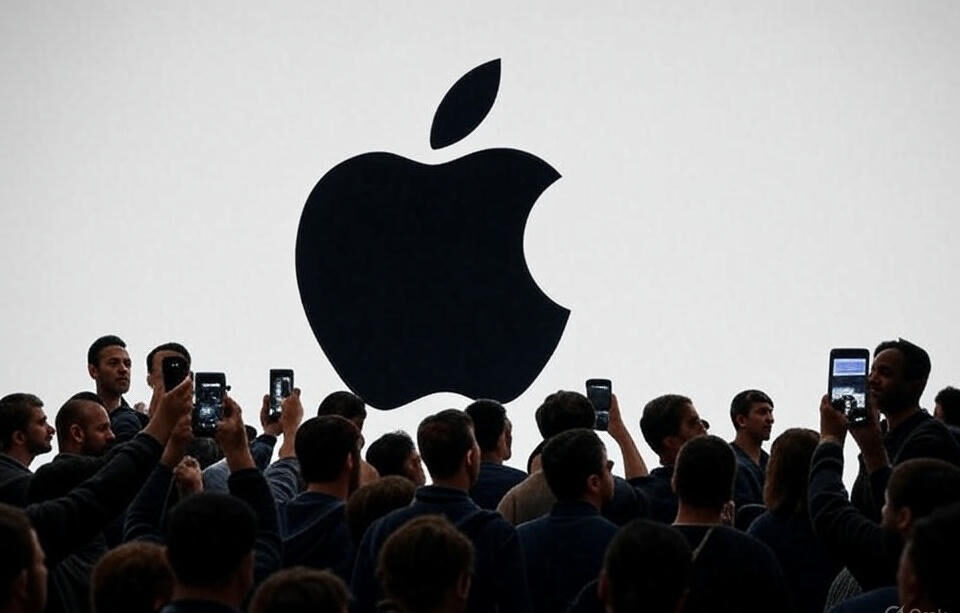
In a bold move to change this landscape of American production of technology, Apple has announced an ambitious $600 billion investment in U.S. manufacturing over the next four years. At the core of the initiative is the newly-launched American Manufacturing Program (AMP) that is a $100 billion program to increase domestic production of crucial parts that are required for iPhones, Apple Watches, and AI servers. This commitment, which is among the biggest in its class, demonstrates Apple’s intention to cut down on foreign supply chains, while encouraging growth in the economy growth and technological advancement across the United States.
The American Manufacturing Program: A Strategic Blueprint

The AMP is the core of Apple’s strategy for investing in its expanded portfolio that aims to speed up the production of sophisticated components in the U.S. The program is focused on strengthening partnerships with major suppliers for high-tech materials and semiconductors locally. Apple’s collaborators include leaders in the industry like:
- Corning is expanding the company’s Harrodsburg, Kentucky, facility with an $2.5 billion commitment to make high-quality covering glass to be used on iPhones as well as iPads along with Apple Watches. This glass is renowned for its clarity and scratch resistance and durability, is a crucial element in Apple’s consumer products.
- Coherent Laser: Offering advanced technologies that improve precision in manufacturing processes, which allows for better production of intricate components.
- GlobalWafers America (GWA) The goal is to increase the speed of the production of silicon wafers. This is an essential element in the chips that power Apple’s A and M series chips.
- Application Materials The company provides state-of-the art machinery to support the growth of fabrication facilities and simplify production lines.
- Texas Instruments: The company is producing analog chips as well as power management solutions vital to optimize the life of batteries and performance in Apple devices.
- Samsung is a key contributor to knowledge in the field of display technology as well as specific semiconductor components, in addition to Apple’s drive for modern hardware.
Although it was not mentioned in the initial rollout of the AMP The ongoing partnership between Apple and TSMC the world’s most renowned chips foundry is bound to play an important part. The TSMC’s Arizona factories, which are currently undergoing expansion, might support the creation of cutting-edge chips for iPhones as well as AI infrastructure, in line with Apple’s national manufacturing objectives.
This AMP will result in more than 20,000 direct employment at Apple and hundreds of thousands more throughout the supply chain, with significant effects on states like Kentucky, Texas, and Arizona. Apple President Tim Cook emphasized the broader concept, saying “Our investment is about building a future where American innovation and manufacturing lead the world in technology.” This initiative is a follow-up to Apple’s previous $500 billion pledge, which is now increased to meet the rising demand for American-made components for technology.
Why This Matters: Geopolitics, Economics, and Innovation
Apple’s announcement is at an important juncture in the entire tech industry. The rising geopolitical tensions, especially between China and the U.S. and China, have exposed weaknesses in supply chains across the globe. As the bulk of Apple’s manufacturing traditionally concentrated in Asia Apple is under the pressure to diversify its manufacturing base. This investment is in line to U.S. government initiatives, like CHIPS and Science Act. CHIPS and Science Act, which are designed to increase manufacturing of semiconductors at home and lessen dependency on overseas suppliers.
In terms of economics the $600 billion commitment will be a game changer. In addition to creating jobs it will also boost local economic activity in the manufacturing hubs, especially in states that have a growing tech infrastructure. For example, Texas is poised to become a key center of semiconductor manufacturing, with the development of new fabrication facilities that are driving growth in employment and technology. The program also focuses on education programs that help build an educated workforce, empowering American workers with the knowledge of high-tech manufacturing techniques, AI, and semiconductor design.

From a point of view of innovation from a business perspective, moving production closer Apple’s Cupertino headquarters can streamline studies and research. Supply chains that are shorter could facilitate quicker prototyping and product development and could accelerate the launch of new-generation devices that have enhanced AI capabilities. The emphasis upon AI servers is especially noteworthy since the demands for data center rises due to the worldwide AI explosion. Apple’s investment could position the company as a leading supplier of equipment for AI-driven apps including cloud computing, to on-device machine-learning.
Challenges and Opportunities
While the size of Apple’s commitment is staggering however, there are difficulties. In order to scale up manufacturing processes that are complex for example, like producing 3nm chips, or high-end display panels require an enormous amount of time, infrastructure and expertise. It is no secret that the U.S. has lagged behind Asia in the field of semiconductor manufacturing and bridging this gap will require a lot of coordination between Apple as well as its suppliers as well as the government agencies. Some analysts are also questioning whether this figure is transferred funds from the existing budgets which could limit any “new” investment’s impact.
On the positive side Apple’s decision could spur others tech companies to follow the same path. Companies such as Google, Microsoft, and Amazon that also depend in global supply chains could have to make investments on U.S. manufacturing to align with national priorities and to avoid any tariffs. The ripple effects could turn into transforming the U.S. into a global manufacturing center which could lead to a revival in American industrial capabilities.
Looking Ahead: A Transformative Moment
The $600 billion Apple investment as well as its American Manufacturing Program mark a significant moment in the tech sector. With its focus on manufacturing in the US, Apple is not only protecting its supply chain but also contributing to a greater national effort to restore leadership in the field of technology manufacturing. This initiative’s success of this program is contingent on the execution of the plan, which includes building new facilities, providing training to workers, and ensuring Apple’s standing as a leader in quality and innovation.
When the show unfolds the tech industry will be following closely. Could Apple’s investment lead to an era in American manufacturing? Could it open the door for cheaper, more modern devices that are powered by U.S.-made components? The future will be interesting however, for the moment Apple’s bold investment is a bold affirmation to show confidence on the future direction technology of American technology.
What do you think of Apple’s plan
Does it have the potential to transform the technology industry, or is it just a symbolic gesture in the midst of a complicated global market? Comment below with your thoughts. comments below!




